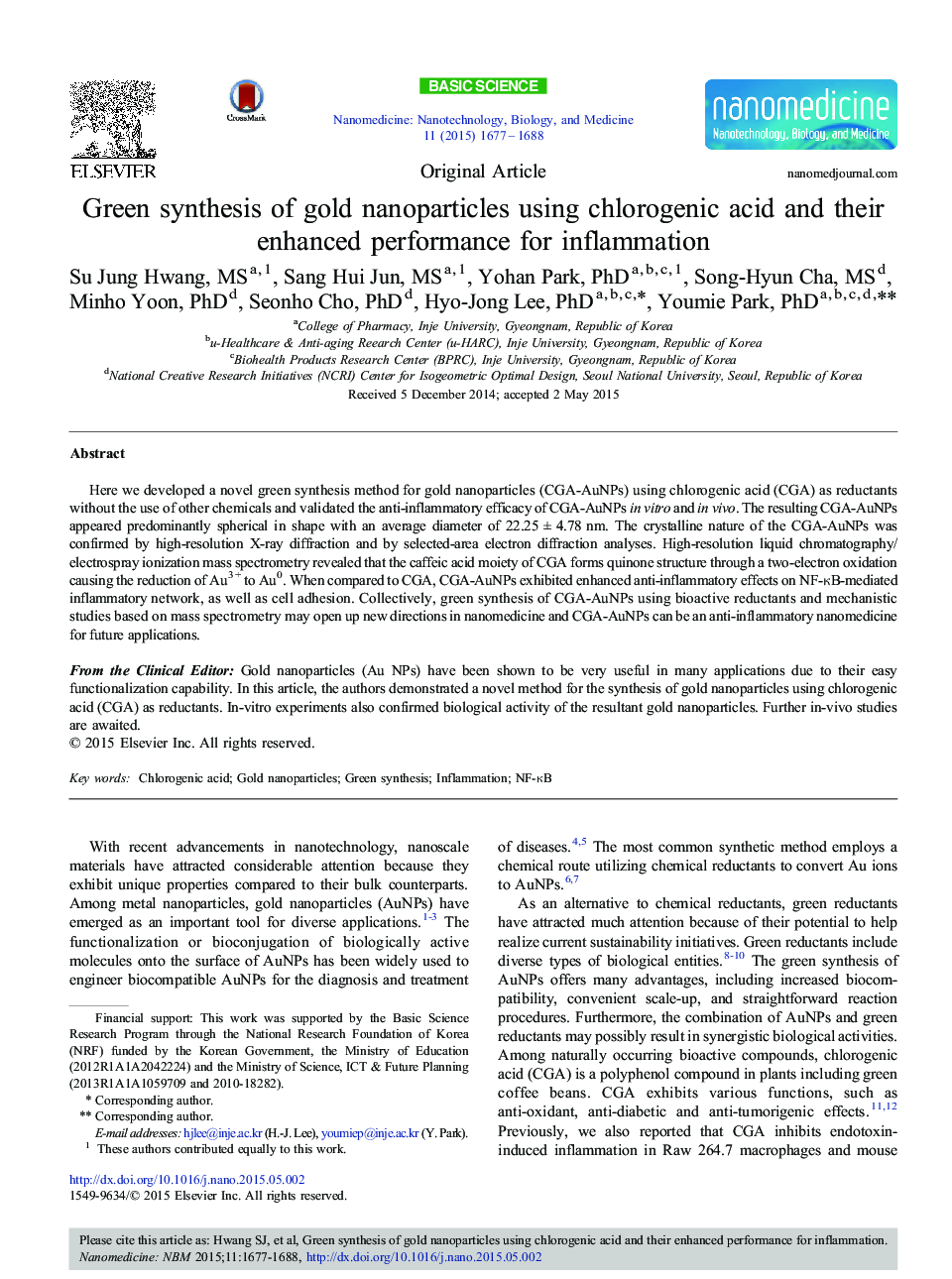| کد مقاله | کد نشریه | سال انتشار | مقاله انگلیسی | نسخه تمام متن |
|---|---|---|---|---|
| 877389 | 911024 | 2015 | 12 صفحه PDF | دانلود رایگان |
Here we developed a novel green synthesis method for gold nanoparticles (CGA-AuNPs) using chlorogenic acid (CGA) as reductants without the use of other chemicals and validated the anti-inflammatory efficacy of CGA-AuNPs in vitro and in vivo. The resulting CGA-AuNPs appeared predominantly spherical in shape with an average diameter of 22.25 ± 4.78 nm. The crystalline nature of the CGA-AuNPs was confirmed by high-resolution X-ray diffraction and by selected-area electron diffraction analyses. High-resolution liquid chromatography/electrospray ionization mass spectrometry revealed that the caffeic acid moiety of CGA forms quinone structure through a two-electron oxidation causing the reduction of Au3 + to Au0. When compared to CGA, CGA-AuNPs exhibited enhanced anti-inflammatory effects on NF-κB-mediated inflammatory network, as well as cell adhesion. Collectively, green synthesis of CGA-AuNPs using bioactive reductants and mechanistic studies based on mass spectrometry may open up new directions in nanomedicine and CGA-AuNPs can be an anti-inflammatory nanomedicine for future applications.From the Clinical EditorGold nanoparticles (Au NPs) have been shown to be very useful in many applications due to their easy functionalization capability. In this article, the authors demonstrated a novel method for the synthesis of gold nanoparticles using chlorogenic acid (CGA) as reductants. In-vitro experiments also confirmed biological activity of the resultant gold nanoparticles. Further in-vivo studies are awaited.
Graphical Abstract
• The caffeic acid moiety of CGA mediates the formation of CGA-AuNPs without chemical reductants through a two-electron oxidation during the reduction of Au3 + to AuNPs.
• CGA-AuNPs exhibit enhanced anti-inflammatory activity in vitro and in vivo through NF-κB down-regulation compared to CGA.Figure optionsDownload high-quality image (100 K)Download as PowerPoint slide
Journal: Nanomedicine: Nanotechnology, Biology and Medicine - Volume 11, Issue 7, October 2015, Pages 1677–1688
